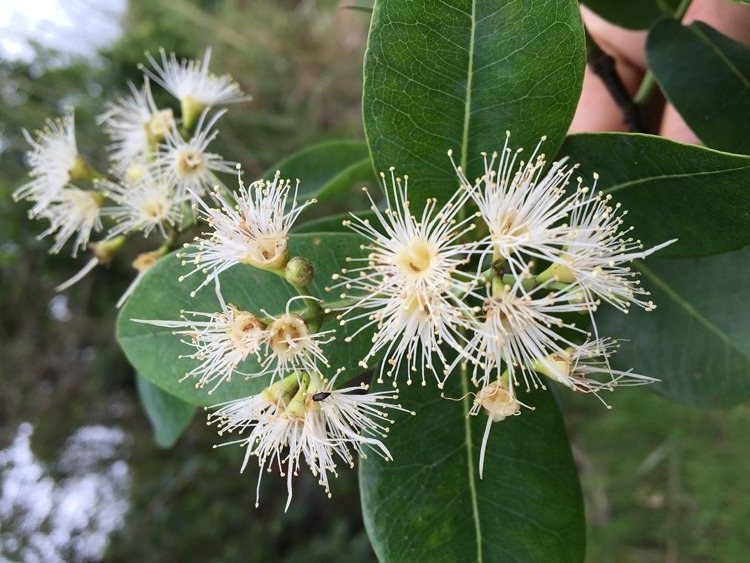Water berry
(Syzygium cordatum)

Description
Syzygium cordatum is an evergreen, water-loving tree, which grows to a height of 8–15 m. This tree is often found near streams, on forest margins or in swampy spots. The leaves are elliptic to circular, bluish green on top and a paler green below. Young leaves are reddish. The white to pinkish fragrant flowers are borne in branched terminals and have numerous fluffy stamens and produce abundant nectar. It flowers from August to November. The fruits are oval berries, red to dark-purple when ripe. Common names are waterbessie (Afrikaans), undoni, umSwi, umJoni and hute (Shona), trâm mốc, trâm vối or vối rừng (Vietnamese). "Water berry" is also used for other species of Syzygium. Occurs along streambanks from Kwazulu-Natal northwards to Zimbabwe and Mozambique. It grows in forest margins, in bush or open grassy and sometimes high country. This tree is known for its many uses. The fleshy fruit is slightly acidic in flavour and is eaten by children, monkeys, bush-babies, bats and birds. The berries are also used to sometimes make an alcoholic drink. The powdered bark is used as a fish poison. In central Africa the tree is known as a remedy for stomach ache and diarrhoea. It is also used to treat respiratory ailments and tuberculosis. Syzygium is a genus of flowering plants that belongs to the myrtle family, Myrtaceae. The genus comprises about 1200 species, and has a native range that extends from Africa and Madagascar through southern Asia east through the Pacific. Its highest levels of diversity occur from Malaysia to northeastern Australia, where many species are very poorly known and many more have not been described taxonomically. Most species are evergreen trees and shrubs. Several species are grown as ornamental plants for their attractive glossy foliage, and a few produce edible fruits that are eaten fresh or used in jams and jellies. The most economically important species, however, is the clove Syzygium aromaticum, of which the unopened flower buds are an important spice. Some of the edible species of Syzygium are planted throughout the tropics worldwide, and several have become invasive species in some island ecosystems. Several species of Syzygium bear fruits that are edible for humans, many of which are named "roseapple". Fifty-two species are found in Australia and are generally known as lillipillies, brush cherries or satinash.
Taxonomic tree:







